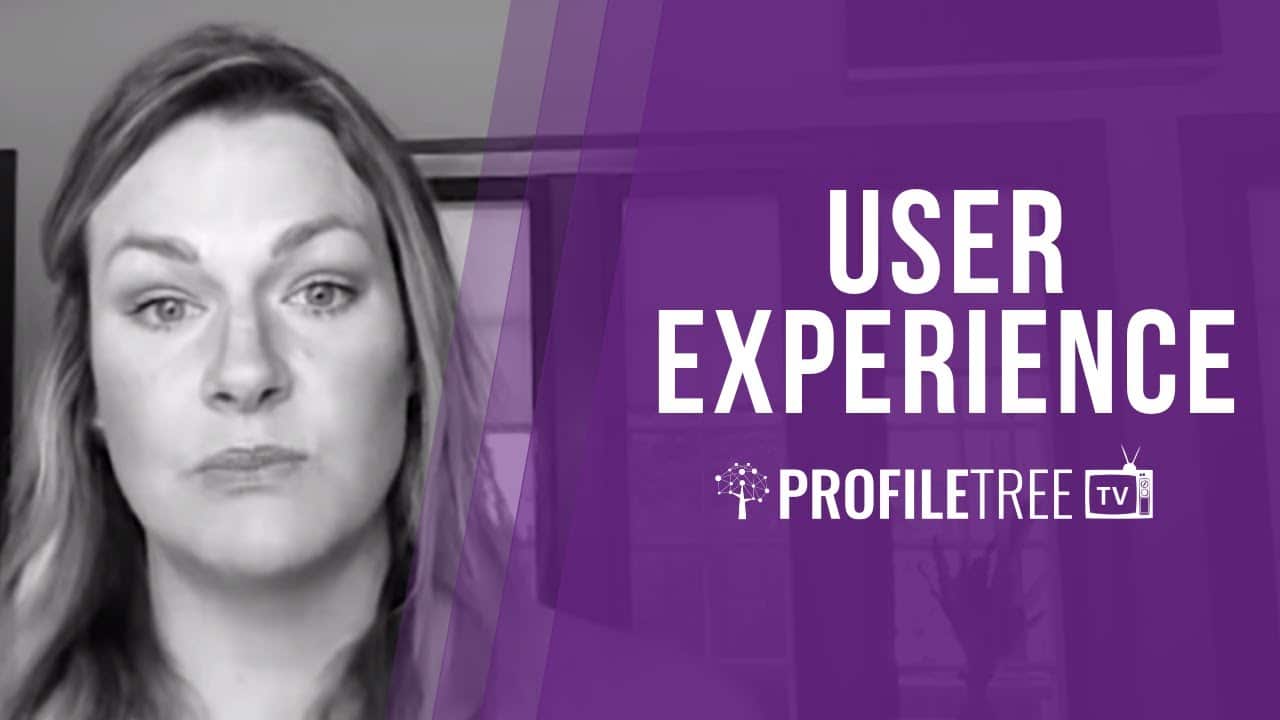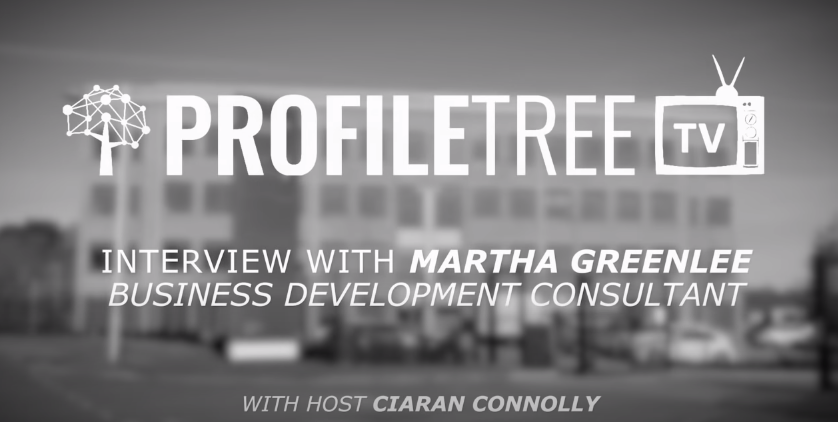Whether you are customer or client-focused, user experience can be applied to any sector.
In our recent Business Leaders episode, our host Ciaran Connolly chats to Business Development Consultant Martha Greenlee about all things UX.
The Florida-based expert is responsible for developing communities, by combining user experience with marketing, anthropology, real estate and tourism for a range of clients.
She is also a customer experience specialist, working with UX thinking both online and offline across multiple projects.
To learn more about how you can use UX thinking across any sector, watch our insightful interview below or read on for the highlights.

Table of Contents

What is UX?
UX stands for ‘user experience’. The definition of UX relates to how an end-user interacts with and responds to another entity. This could be a company, a service, a product – or even a place.
The UX process includes the practical, experiential, affective, meaningful and valuable aspects of interaction. Usually, the term ‘UX’ applies to human-computer interaction, and is a key part of website design. However, it can apply to a much broader spectrum of service providers.
As told by Martha, user experience has been at the forefront of her life. Whether it has been when studying, travelling or even moving house.

Martha Greenlee: Her Journey With UX
Martha’s career has seen her growing businesses for over a decade, particularly in the areas of marketing, tourism, hospitality, arts and real estate.
While property development may be her current specialism, her consulting has a unique focus on communities – therefore taking a much broader view beyond traditional real estate.
Martha explains that her current work focuses on “developing properties that are underperforming into high performing properties”, with an emphasis on an entire geographical area as opposed to an individual property.
“It’s one half real estate valuation – that’s the dollars and cents of it and who hires me really. Then the other half is social conscience. Using my background in anthropology to look at the messaging you are providing as a community about who you are.
“It’s about making sure that nothing is lost, that it’s authentic and what’s best for the society and area that receives the benefit of tourism.”
Martha’s path to such a unique specialism comes from a range of interesting experiences while growing up.
“When you get project after project, you don’t tend to think about how you got from one place to another.
“But thinking about it more closely, my great grandfather was one of the largest collectors of Portuguese maps. My grandfather was also an archaeologist.
“My father was a record producer so at a very early age I would go on tour. Things like logistics, tour schedules and travelling impacted me.
“In college my mom wanted a travelling companion to go on educational tours. It gave me such an interesting position being younger and going on some of these older educational tours with anthropologists. It was incredible.”
This upbringing helps Martha apply her expertise to a range of projects and – as a seasoned traveller herself – apply a global view to user experience.

UX On a Global Scale
Whether online or offline, the demand for UX is high, as Martha confirms:
“UX is everywhere – whether we’re consuming digital content or in real life.
“I work on a number of projects at the same time. Some of my projects are in the digital space – some are across the globe.
“The tourism work is project to project, development to development. I’m now moving to Spain looking at the European market and advising on the EU.”
When asked how UX can overlap with tourism, Martha explains how a sense of user experience can be applied anywhere in the world. And how sometimes, less is more.
“If you are on a tour, and you experience too much in one day – for example when we were doing the street art tours on Vespas – you reach a threshold and you can’t take anymore.
“It depends on the type of tourism you are looking at with UX. It’s really important in UX to understand people’s threshold.
“If someone is really invested in tourism and the type of tour you’re offering, you have to adjust your speed. Taking too much in is exhausting and generates a bad user experience.”
Martha explains an example of high-speed UX in tourism when she visited China.
“I was on a tour in China, and the speed really was not adjusted for American consumers.
“When you are consuming culture, you can take in two to three things a day. But in China it was just too much.”
While it is difficult to make a fatal error in tourism UX, if attractions do not pitch experiences to a broader audience and culture, they might misjudge tourists and not appeal to them.
Martha advises how you have to constantly have your visitor in mind when it comes to tourism and user experience.
“For example, tours where the history being visited may have a darker side, you can lose interest really fast. The way you message it, and the more tourists’ expectations are managed, then you will get that audience that you want.”
According to Martha, the clearer your strategy and messaging – the better UX you can achieve.
“If you’re developing tourism programmes, it’s really important to be as specific as possible with managing the expectations going in. What is the content they are going to be consuming? What is the main thing they are going to get out of it?
“A lot of what I have been working on is the ability for tourism to transform a person. That’s what people crave – experiencing cultures, being inspired and transforming within themselves.”
If you want to learn about Martha’s insights into UX and tourism plus much more – watch our full Business Leaders interview.
If you want to find out more about Martha Greenlee and her UX services, you can find her via her website or LinkedIn.
Contextual Research: Going Beyond the User, Deepening Your Understanding
While user research is crucial for understanding individual needs and behaviors, true UX gold lies in contextual research: exploring the broader environment that shapes those needs. It’s like zooming out from a user’s screen to see the entire movie theater, the neighborhood, and even the cultural landscape they’re immersed in.
Going beyond isolated user research:
- Market trends: What are upcoming developments in your industry? How are user needs evolving as technology and competitors shift? Analyze industry reports, attend conferences, and track major players to get a holistic view.
- Competitive landscape: How are similar products or services solving user problems? Identify strengths and weaknesses in your competitive landscape. Conduct competitive analysis studies to understand user perceptions and market gaps.
- Related technologies: Are there emerging technologies that could impact your product or user behavior? Stay up-to-date on advancements in AI, AR/VR, or voice interfaces to anticipate future needs and opportunities.
- External factors: What social, economic, or cultural trends might influence user behavior? Consider demographics, accessibility needs, environmental concerns, and global events to see the bigger picture.
Identifying external factors that influence user needs:
- Social influences: How do users interact with your product within their social circles? Analyze online communities, social media trends, and influencer marketing to understand peer pressure, shared aspirations, and cultural norms.
- Economic context: How does user behavior change based on income level, job market fluctuations, or global economic trends? Conduct surveys, analyze purchase patterns, and understand the financial realities shaping user choices.
- Accessibility considerations: Does your product cater to diverse abilities and cultural backgrounds? Explore accessibility guidelines, conduct user testing with diverse participants, and consider how cultural differences might impact interaction.
- Environmental impact: How is sustainability and environmental awareness influencing user choices? Analyze eco-friendly alternatives, research user values around ethical consumption, and understand the growing importance of green design.
Benefits of contextual research:
- Uncover hidden needs: By understanding the broader context, you may discover deeper user motivations and unmet needs that traditional user research might miss.
- Improve design relevance: Create products that are not just usable but truly resonate with users’ current context, preferences, and challenges.
- Future-proof your solutions: Anticipate upcoming trends and technological advancements to design products that remain relevant and adaptable in the evolving landscape.
- Make informed business decisions: Allocate resources wisely by understanding which external factors hold the most potential for shaping future user needs and market growth.
Accessibility Considerations: Designing for Everyone
In today’s digital world, ensuring accessibility is not just an ethical imperative, but also a smart business decision. By making your product or service accessible for users with disabilities, you tap into a vast untapped market and create a more inclusive user experience for everyone.
Understanding Accessibility for Users with Disabilities:
- Visual impairments: Consider users with low vision, blindness, or color blindness. Implement features like color contrast adjustments, screen reader compatibility, and alt text for images.
- Hearing impairments: Cater to users with deafness or hearing difficulties. Include captions and transcripts for videos, audio descriptions for images, and clear visual cues for alerts and sounds.
- Motor impairments: Accommodate users with limited mobility or dexterity. Design for keyboard navigation, voice control options, and touch-friendly interfaces.
- Cognitive impairments: Be mindful of users with learning disabilities or cognitive challenges. Use clear and concise language, provide multiple ways to achieve tasks, and avoid cognitive overload.
Standards and Guidelines:
- WCAG 2.1: Adherence to the Web Content Accessibility Guidelines (WCAG) 2.1 ensures a baseline level of accessibility for your product or website. The guidelines cover a wide range of aspects, including visual design, keyboard navigation, and content structure.
- International standards: Familiarize yourself with relevant international standards, such as the W3C’s Web Accessibility Initiative (WAI) and the ISO 20482 standard for information technology accessibility.
Tools and Techniques:
- Accessibility testing tools: Utilize automated tools like WAVE or Lighthouse to identify potential accessibility issues early in the development process.
- Screen readers: Test your product with popular screen readers like JAWS or NVDA to understand how users with visual impairments interact with your interface.
- Keyboard navigation tools: Ensure all elements are accessible and functional using only the keyboard for users with limited mouse control.
- Color contrast checkers: Verify sufficient contrast between text and background colors to avoid issues for users with color blindness.
Benefits of Accessible Design:
- Broader audience reach: Tap into the market of users with disabilities, estimated at over 1 billion people worldwide.
- Improved user experience: Create a more inclusive and equitable experience for all users, regardless of their abilities.
- Enhanced brand reputation: Demonstrate your commitment to social responsibility and ethical design, boosting brand credibility and trustworthiness.
- Reduced legal risks: Avoid potential lawsuits and legal fees by complying with accessibility regulations.
In conclusion, accessibility considerations should be integral to every stage of the design and development process. By embracing accessibility, you can not only fulfill your ethical responsibility but also unlock new market opportunities and create a truly user-centric experience for everyone.
Customer Experience Alignment: Beyond UX, Towards a Seamless Journey
While User Experience (UX) focuses on individual interactions with your product or service, Customer Experience (CX) takes a holistic view, encompassing every touchpoint a customer has with your brand throughout their entire journey. Aligning these two perspectives is crucial for creating a seamless and truly satisfying experience for your customers.
Shifting from UX to CX:
- Mapping the customer journey: Identify all touchpoints, from initial awareness to post-purchase support. Analyze each stage for potential friction points, pain points, and opportunities to delight.
- Understanding emotional journeys: Go beyond actions and interactions. Consider the emotions, motivations, and expectations your customers have at each stage. Empathy mapping can be a powerful tool here.
- Breaking down silos: Ensure consistency across all channels and departments. UX, marketing, customer service, and other teams need to work together to ensure a unified customer journey.
Achieving Consistency in Customer Experience:
- Define brand voice and values: Establish a clear and consistent brand identity that guides all interactions with your customers.
- Standardize processes and communication: Make sure customer service, marketing materials, and website content all align with your brand voice and values.
- Personalize the experience: Leverage data and technology to personalize interactions across touchpoints, making customers feel valued and understood.
- Invest in employee training: Equip your team with the skills and knowledge they need to deliver exceptional customer service at every touchpoint.
Benefits of Customer Experience Alignment:
- Increased customer satisfaction and loyalty: When customers have a consistent and positive experience across their entire journey, they are more likely to be satisfied with your brand and become loyal customers.
- Improved brand reputation: A positive customer experience is a powerful marketing tool. Happy customers will tell their friends and family about your brand, boosting your reputation and driving referrals.
- Reduced churn and increased profitability: Satisfied customers are less likely to churn, leading to cost savings and increased profitability for your business.
- Improved employee engagement: When employees are part of creating a positive customer experience, they are more engaged and motivated, leading to better overall performance.
In conclusion, aligning UX and CX is not just about aesthetics or individual interactions; it’s about building a unified and meaningful journey for your customers. By understanding their entire experience, removing friction points, and ensuring consistency across touchpoints, you can create loyal customers, strengthen your brand reputation, and achieve long-term business success.
Remember, your customer experience is a tapestry woven from every interaction your brand has with its customers. By aligning UX and CX, you can ensure that every thread contributes to a beautiful and seamless picture of satisfaction and loyalty.
Psychology and Behavioral Economics Concepts: Deepening Your UX Design
Creating exceptional user experiences goes beyond understanding usability and aesthetics. Delving into psychology and behavioral economics can unlock a hidden layer of insights, revealing the “why” behind user behavior and enabling you to design for intuitive, engaging, and persuasive interactions.
Understanding Psychological Aspects:
- Attention and perception: Factors like cognitive overload, selective attention, and priming influence how users perceive information and interact with interfaces. Use visual hierarchy, chunking content, and consistent cues to guide users effectively.
- Memory and decision-making: Short-term memory limitations, confirmation bias, and loss aversion shape user choices. Design memorable elements, provide timely feedback, and present choices strategically to nudge users towards optimal decisions.
- Motivation and emotion: Pleasure, curiosity, and a sense of progress drive user engagement. Gamification, storytelling elements, and clear progress indicators can motivate users and build emotional connections with your product.
Behavioral Economics and Cognitive Biases:
- Anchoring bias: Users rely on the first piece of information they encounter as a reference point. Utilize price anchoring, scarcity cues, and social proof to influence user perceptions and choices.
- Loss aversion: Users fear losses more than they value gains. Highlight potential gains, frame decisions as avoiding losses, and offer risk-free trials to encourage action.
- Mental accounting: Users categorize and value different types of resources differently. Design interfaces that align with how users think about money, time, and effort to encourage desired behavior.
Improving UX through Mental Model Awareness:
- Mental models: Users develop internal representations of how things work. Aligning your product’s functionality with the user’s mental model reduces cognitive load and creates a seamless experience.
- Discoverability and learnability: Design for intuitive exploration and ease of use. Prioritize key features, offer clear navigation and search, and provide contextual help to minimize reliance on guesswork.
- Predictability and consistency: Maintain established patterns and conventions within your interface. Avoid unnecessary surprises and ensure users can anticipate how things will work, building trust and familiarity.
Benefits of Integrating Psychology and Behavioral Economics:
- Increased user engagement and conversion rates: Understand user motivations and biases to design for desired actions and behaviors.
- Reduced cognitive load and improved usability: Make interactions intuitive and effortless, minimizing frustration and improving user satisfaction.
- Stronger brand loyalty and trust: Foster positive emotional connections and build user confidence through predictable and transparent design.
- Enhanced decision-making and persuasion: Nudge users towards optimal choices while maintaining ethical boundaries and user autonomy.
Agile UX Integration: Dance Between Speed and User-Centricity
Bridging the gap between the iterative world of agile development and the meticulous realm of user experience design (UX) can be like trying to choreograph a waltz in a mosh pit. But fear not, for agile UX integration is not an oxymoron! It’s a harmonious blend of rapid prototyping, user-centric iterations, and tight collaboration that fuels product development with invaluable user insights.
Aligning Sprints with UX Design:
- Embed UX in the team: Don’t relegate UX to the sidelines. Integrate UX professionals as core members of the agile team, participating in sprint planning, backlog refinement, and daily stand-up meetings.
- Prioritize user-centric tasks: Incorporate UX tasks like user research, prototyping, and usability testing into each sprint, ensuring user insights inform iterative development decisions.
- Focus on small, testable features: Break down your UX goals into bite-sized chunks that align with sprint timelines. Prioritize features that can be rapidly prototyped, tested, and refined within each iteration.
Rapid Prototyping and Iterative Testing:
- Embrace low-fidelity prototypes: Ditch pixel-perfect mockups for quick and dirty sketches, paper prototypes, or wireframes. The goal is to test core functionalities and user flows early and often, not create polished masterpieces.
- Conduct user testing throughout the process: Don’t wait for the “final” product to gather user feedback. Integrate small-scale usability testing sessions throughout each sprint to identify usability issues and inform rapid iterations.
- Learn from failure and adapt: Embrace the iterative nature of agile. View failed tests and user feedback as valuable learning opportunities, not setbacks. Modify your designs based on these insights and iterate with a focus on continuous improvement.
Modifying Based on Continuous User Feedback:
- Collect feedback through multiple channels: Utilize surveys, in-person interviews, A/B testing, and user observation to gather diverse and qualitative data throughout the development process.
- Analyze and prioritize feedback: Don’t get overwhelmed by a flood of data. Prioritize critical user feedback based on its frequency, severity, and alignment with product goals.
- Communicate insights transparently: Share user feedback and research findings with the entire team. This ensures everyone is informed and invested in creating a product that truly meets user needs.
Benefits of Agile UX Integration:
- Reduced development time and costs: Rapid prototyping and iterative testing eliminate costly reworks later in the process, leading to faster product releases and reduced development expenses.
- Improved user satisfaction and product quality: Continuously incorporating user feedback ensures the final product is truly user-centric and meets user needs, leading to higher satisfaction and loyalty.
- Increased team collaboration and agility: Close collaboration between UX and development teams fosters a shared understanding of user needs and goals, making the entire development process more agile and responsive.
- Reduced risk of failure: Early identification and resolution of usability issues through ongoing testing mitigates the risk of launching a product that doesn’t resonate with users.
In conclusion, agile UX integration is not just a methodology; it’s a mindset shift. It’s about embracing the iterative nature of agile development and finding ways to infuse user-centricity into every stage of the process. By adopting rapid prototyping, iterative testing, and a willingness to learn and adapt, you can create products that not only meet business needs but also delight users at every turn.
UX thinking: Frequently Asked Questions:
1. What are the biggest challenges of integrating UX design with agile development?
- Aligning sprint timelines with user research and testing demands.
- Balancing the need for rapid prototyping with user-centricity.
- Effectively communicating user insights to development teams.
- Overcoming resistance to change from stakeholders accustomed to traditional design processes.
2. What tools and techniques can be used for rapid prototyping in agile UX?
- Paper prototyping, wireframing tools, rapid prototyping software like Figma or Sketch.
- Online survey platforms for quick user feedback loops.
- A/B testing tools to validate design decisions with real user data.
3. How can we ensure continuous user feedback is effectively incorporated into the development process?
- Integrate UX professionals into sprint planning and backlog refinement to prioritize user-centric tasks.
- Conduct user testing sessions at regular intervals throughout each sprint.
- Utilize user feedback boards and collaboration tools to share insights transparently with the team.
- Establish a culture of openness to feedback and willingness to iterate based on user needs.
4. What are some successful examples of companies using agile UX integration?
- Spotify leverages continuous A/B testing and user feedback to refine their music streaming platform.
- Netflix employs agile UX practices to personalize their video recommendations and user interface.
- Airbnb utilizes rapid prototyping and iterative testing to improve their booking experience.
UX thinking: Conclusion:
Agile UX integration is not just a trendy buzzword, it’s a powerful approach to building user-centric products in today’s fast-paced world. By embracing rapid prototyping, continuous user feedback, and close collaboration between UX and development teams, you can unlock the true potential of agile development and create products that not only meet business goals but also truly delight your users.
Remember, agility isn’t about sacrificing user-centricity, it’s about finding innovative ways to weave user insights into every stage of the development process. Start your agile UX journey today, embrace the learning curve, and witness the transformative power of user-centered design in a world of constant change.
Become a Part of Our Business Leaders Series
Interested in featuring on our Business Leaders series? In our acclaimed series, we share amazing advice, tips and stories from business owners, managers and senior leaders.
From growing your business to looking after your staff, new industry insights and innovative ideas – we cover everything to inspire professionals across all sectors. If you want to become a part of it, simply drop us a message.


